How To Use – Email Exporter Tool
EmailXport is one of the advanced tools that allows users to export emails from multiple sources, such as PST, OST, MBOX, MSG, EML, EMLX, and Outlook Profile to various file formats. It also lets you extract email addresses and attachments with ease.
Step 1: Download, install, and launch the Email Exporter Tool.
Step 2: On the software’s home screen, click on Add Source.
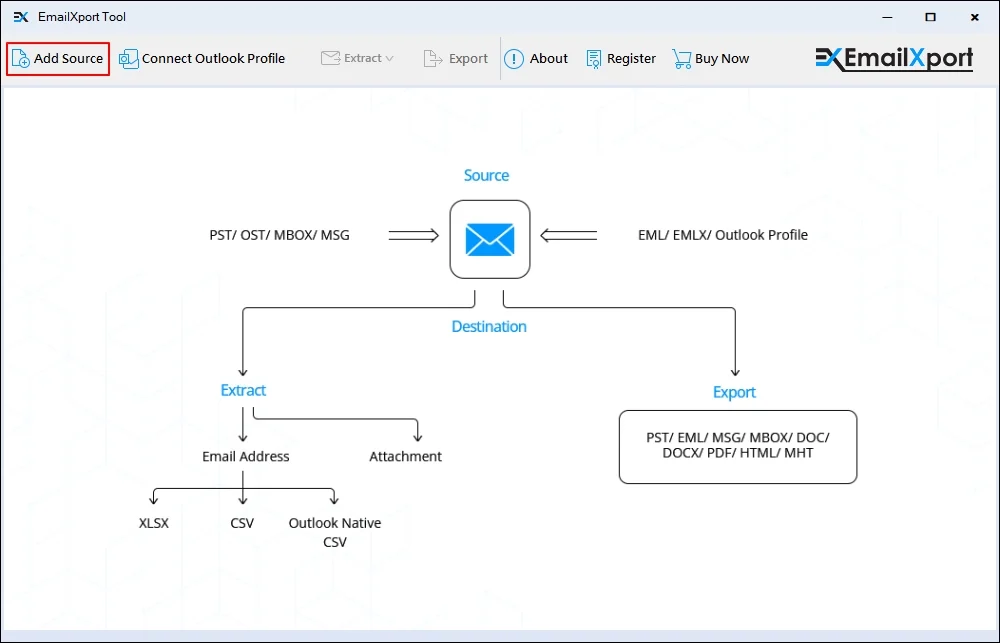
Step 3: The software supports multiple source files, such as PST, OST, MBOX, MSG, EML, and more.
Here we are proceeding with an OST file. Select the required file format and click on Browse.
Note: The Search files across your PC option helps you locate the OST file automatically by just selecting any folder or drive.

Step 4: From the following window, select the OST file and click Open.
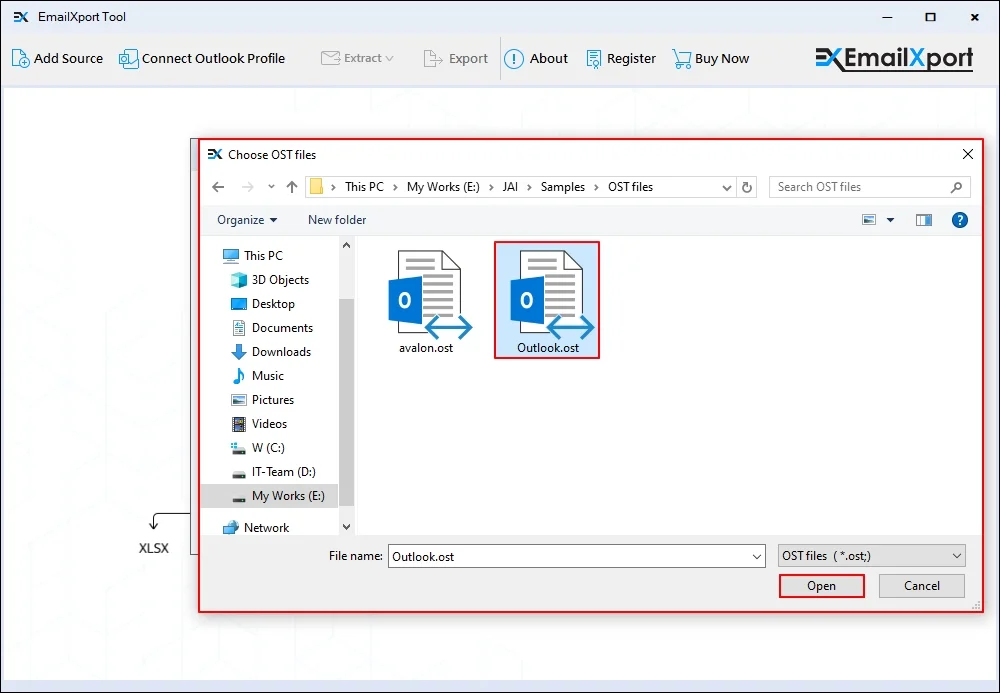
Step 5: Now, click on Add Files for further processing.
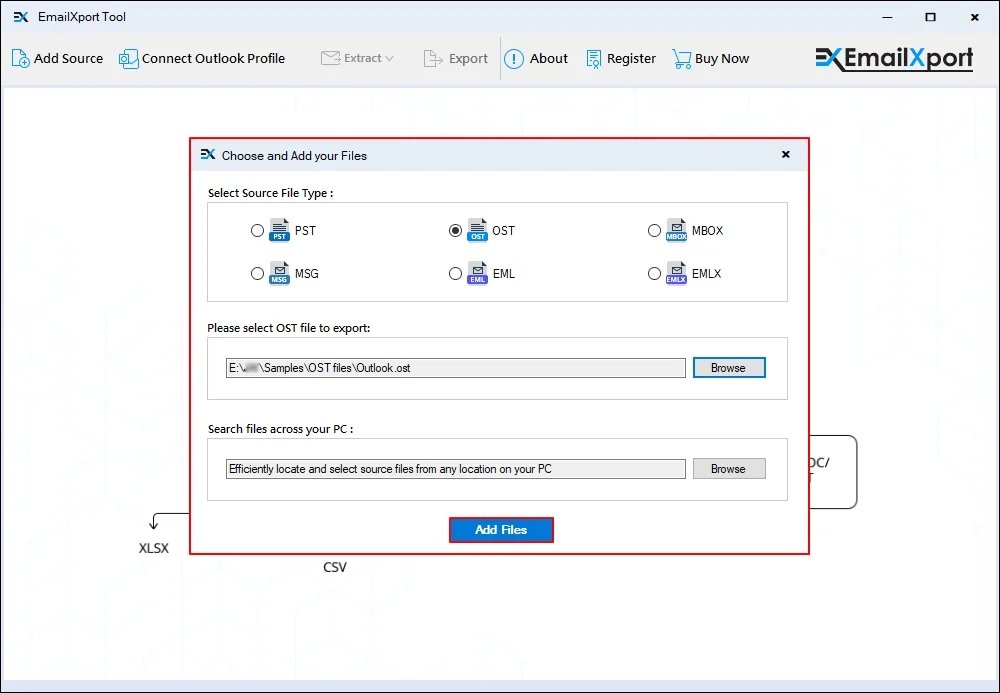
Step 6: The software will add the selected OST file.
Note: However, if you want to export data directly from Outlook. Instead of adding source, just click on the Connect Outlook Profile option.

In the Choose Outlook Profile section, Choose Outlook Profile and click Select.
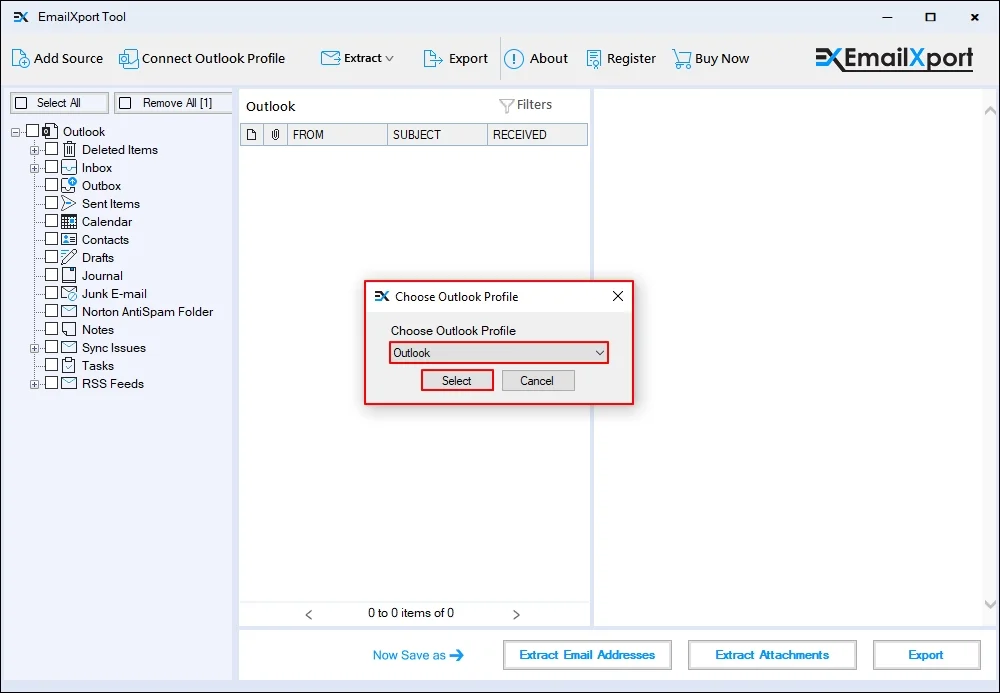
After connecting your Outlook profile or adding source, you will get three export options: Extract Email Addresses, Extract Attachments, and Export.
Let’s go through each component separately:
Extract Email Addresses from the Source File
Step 7: The software will list all the files and folders in a hierarchical structure. Select a specific file or folder and preview its data with complete data integrity. After viewing data, click on Extract Email Addresses.
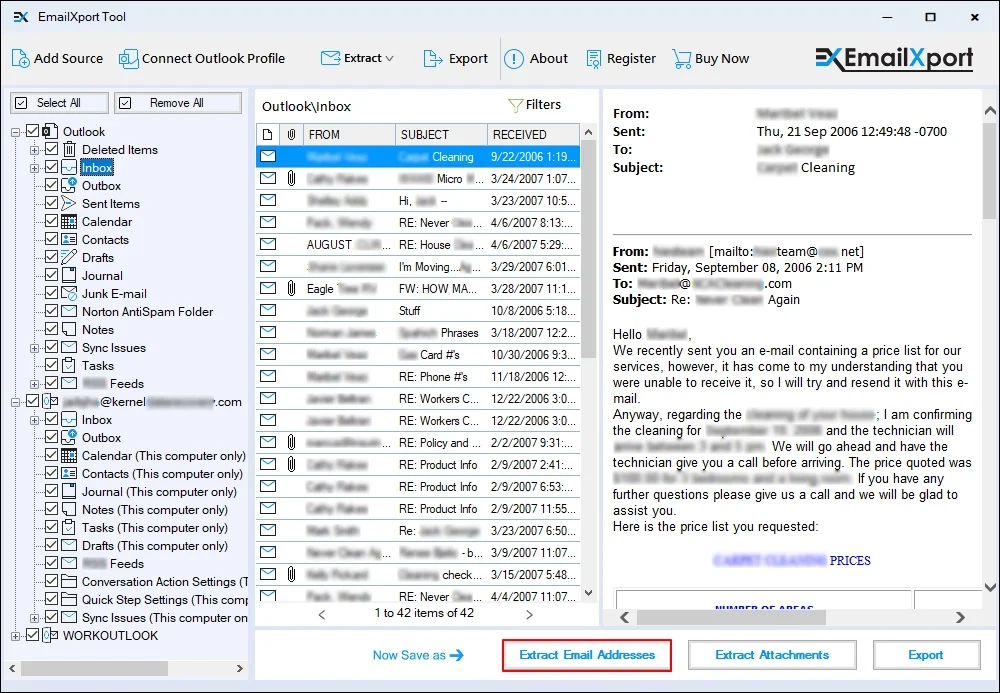
Step 8: In the Extract Email Addresses window, click on Browse to select the preferred saving location.

Step 9: Select a desired folder and click OK.
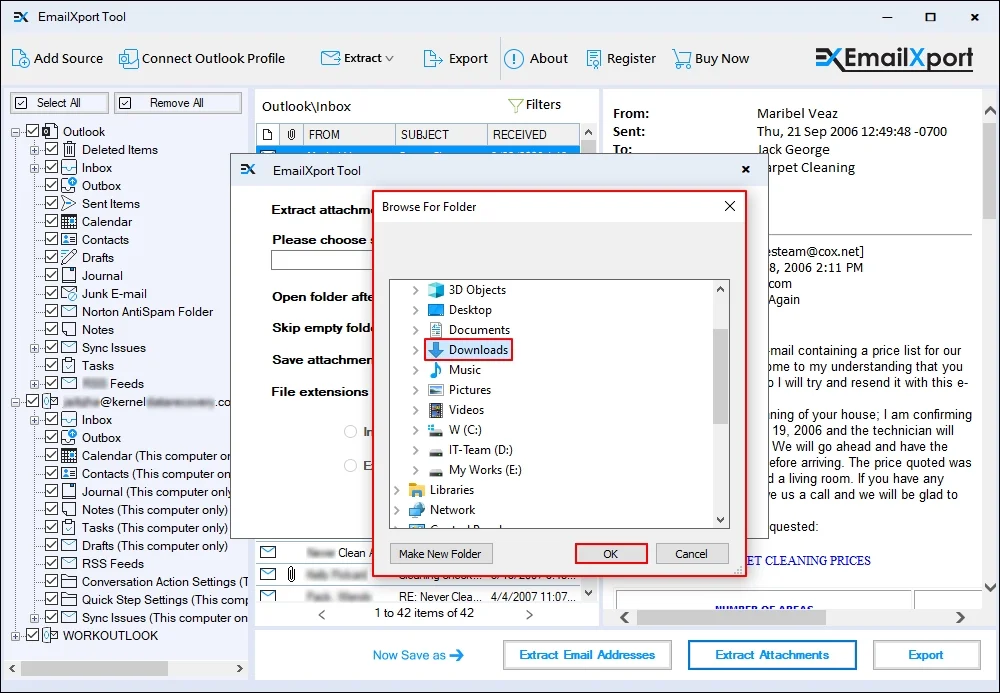
Step 10: Now, check out the multiple given options to specify your email addresses extraction process:
- After extraction open folder: You will be automatically redirected to saved data after extracting all the email addresses.
- Extract with in folder structure: Make sure to extract email addresses in the original folder name, similar to the source.
- Skip empty folder: Exclude extracting empty folders from the source file.
- Extract email addresses from: Specify the email items from where you want to extract email addresses
After applying all the required options, click List.

Step 11: The software will start extracting all the email addresses and show a live progress.
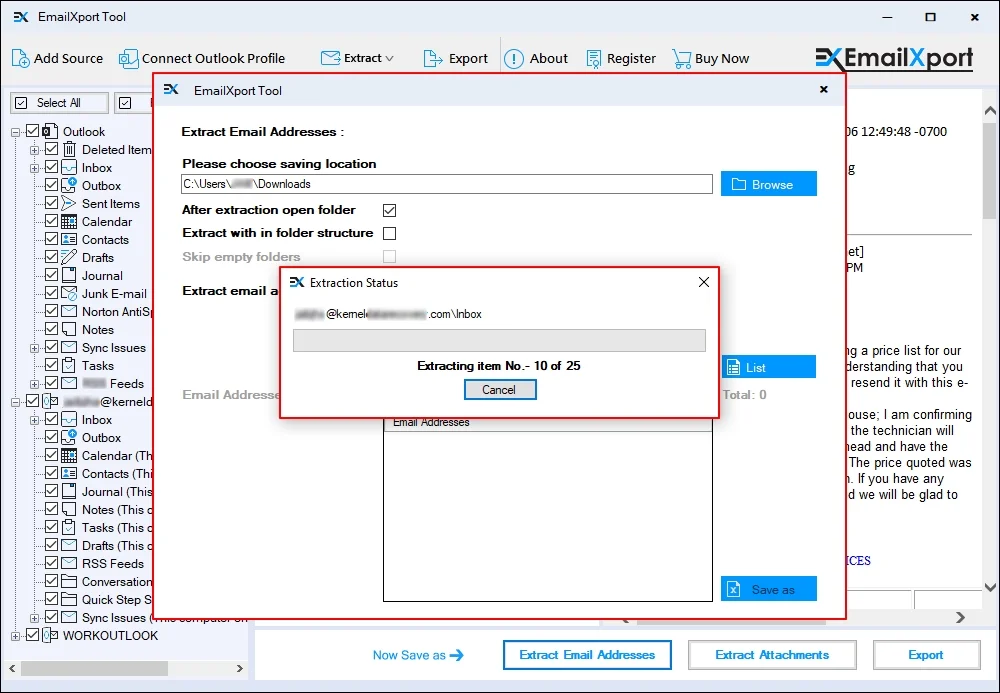
Step 12: After extracting all the email addresses, you will get an Extraction Completed message. Click Done.
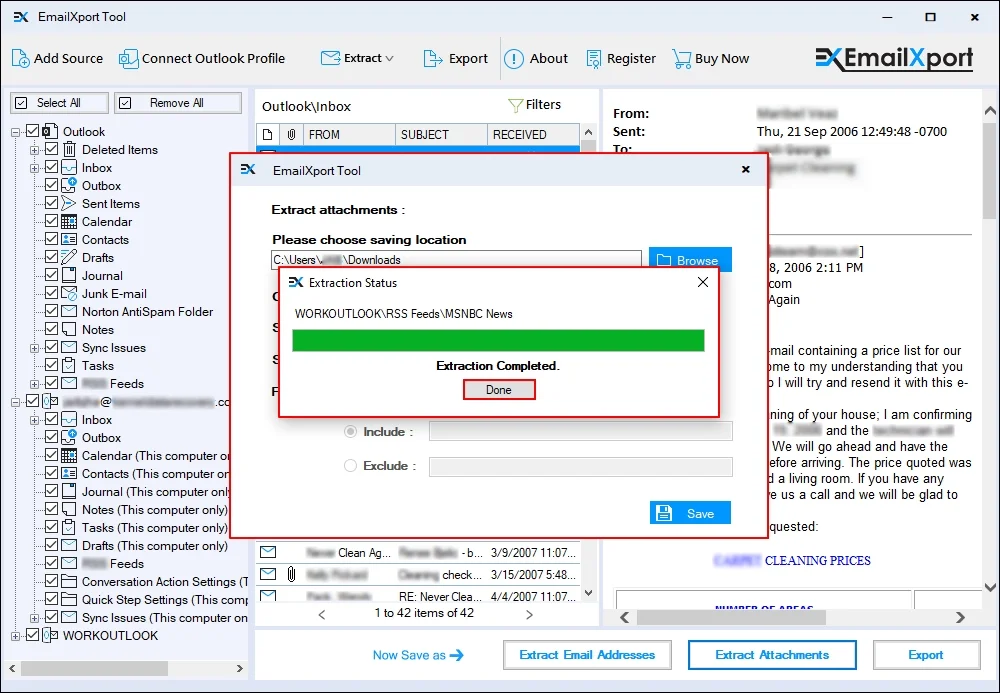
Step 13: The software will list all the email addresses in the Email Address found column. Click on Save as and select a specific file type from XLSX Format (.xlsx), CSV Format (.csv), and Outlook Native CSV (.csv) to save data.
Here, we are proceeding with XLSX Format (.xlsx) format.
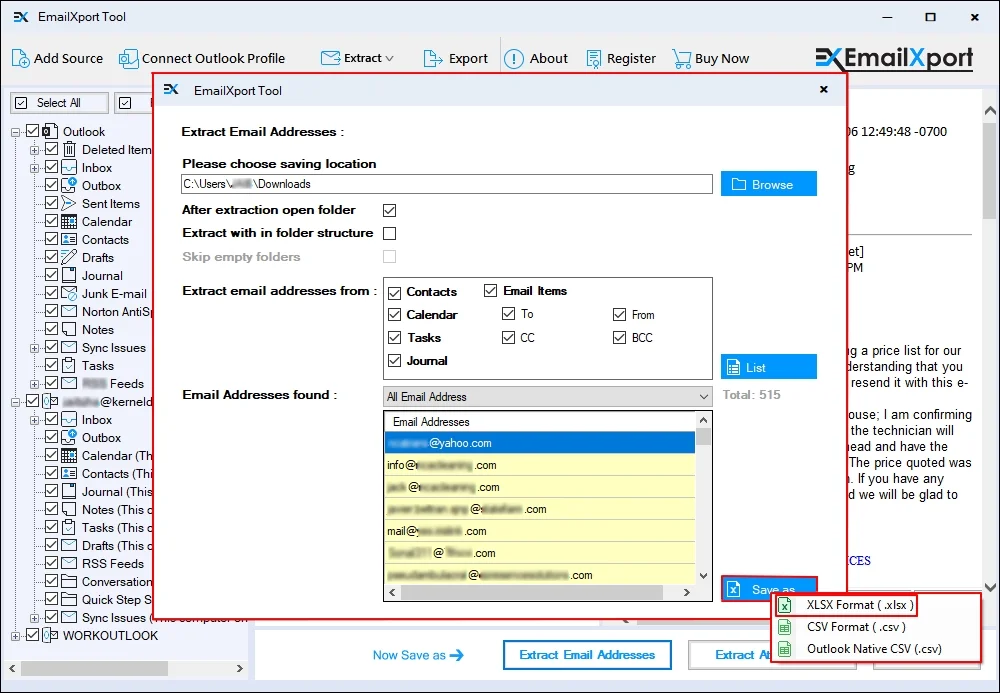
Step 14: After that, you will get “Extracted email addresses saved successfully” message and click OK.

Step 15: The software will automatically redirect you to the saved file. Access your data with complete data integrity.

Steps to Extract Attachments
Step 7: Preview all the content of a specific file or folder and click on the Extract Attachments option.
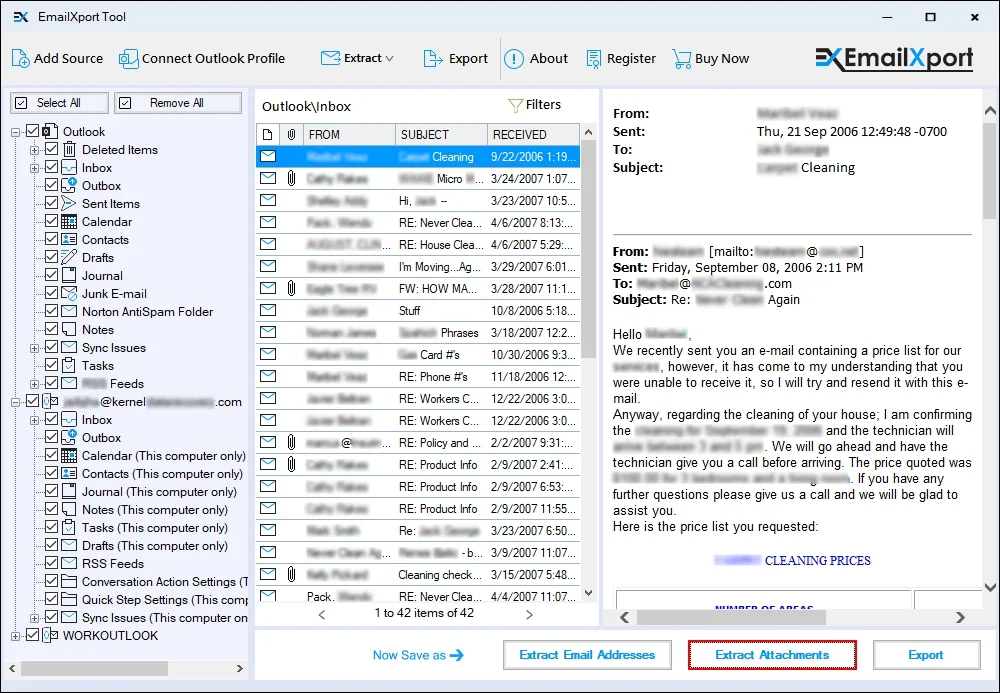
Step 8: In the following window, click on Browse to select the preferred saving location.

Step 9: Select a specific folder or create a new folder to save the output file and click OK.

Step 10: Now, select the required options from the given ones to get a selective attachments extraction:
- Open folder after extraction completed: The software will automatically redirect you to the extracted data.
- Skip empty folders: Exclude extracting empty folders of a source file.
- Save attachments file (having no extension): Save all attachments files that didn’t have a proper extension.
- Apply File extensions filter from Include and Exclude Folders name to extract specific folders from a source file.
After applying all the necessary options, click Save.

Step 11: The software will start Extracting attachments from the source file and show the live extraction status.

Step 12: After a successful extraction, you will get “Extraction Completed” message. Click Done.

Step 13: You will be automatically redirected to extracted files in your system.
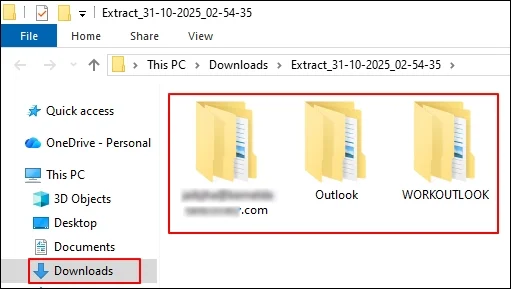
Export Data in Other Formats:
Step 7: Get a preview of the selected file or folder and click Export.
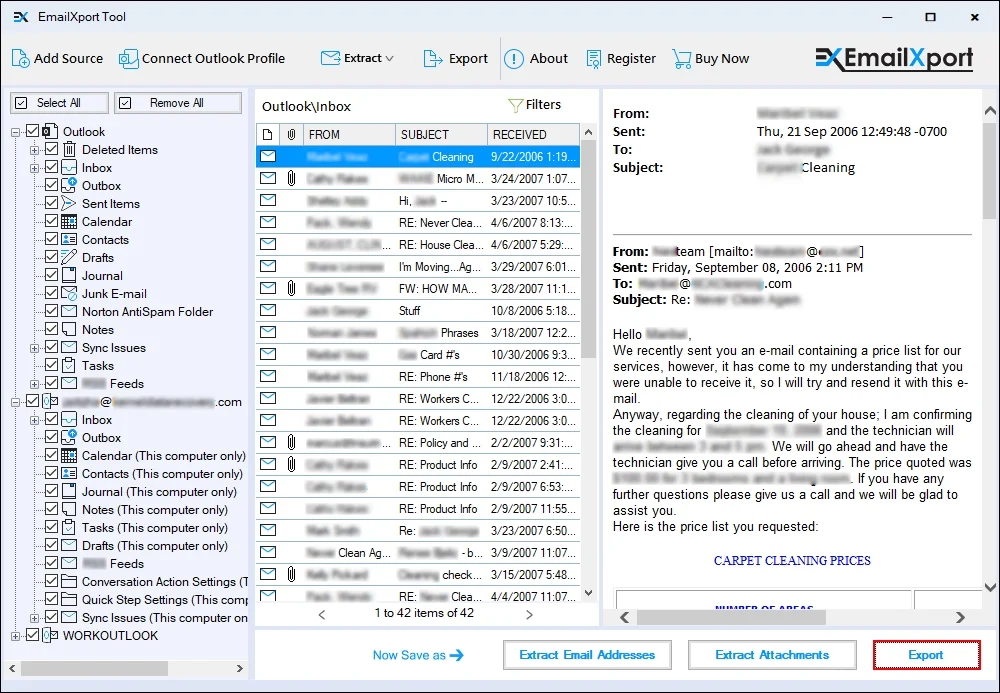
Step 8: The software offers multiple output formats, including PST, EML, MSG, MBOX, DOCX, DOC, PDF, HTML, and MHT.
Note: Here, we are proceeding with the PST option:
Now, Choose export options from:
- Split PST after: Split the output PST file into multiple smaller files, such as 1 GB, 2 GB, 3 GB, and many more.
- Skip empty folders: Exclude exporting empty folders in the output file.
- Open folder after export is done: The tool will automatically redirect you to the folder where files are saved.
- Get log report of conversion
- Choose Date Filter: Select From and To dates to export data from specific dates.
After applying required filters, click on Browse to select a specific saving location.

Step 9: Select a specific folder to save the output file and click OK.

Step 10: Finally, click on Export option to start the exporting process.
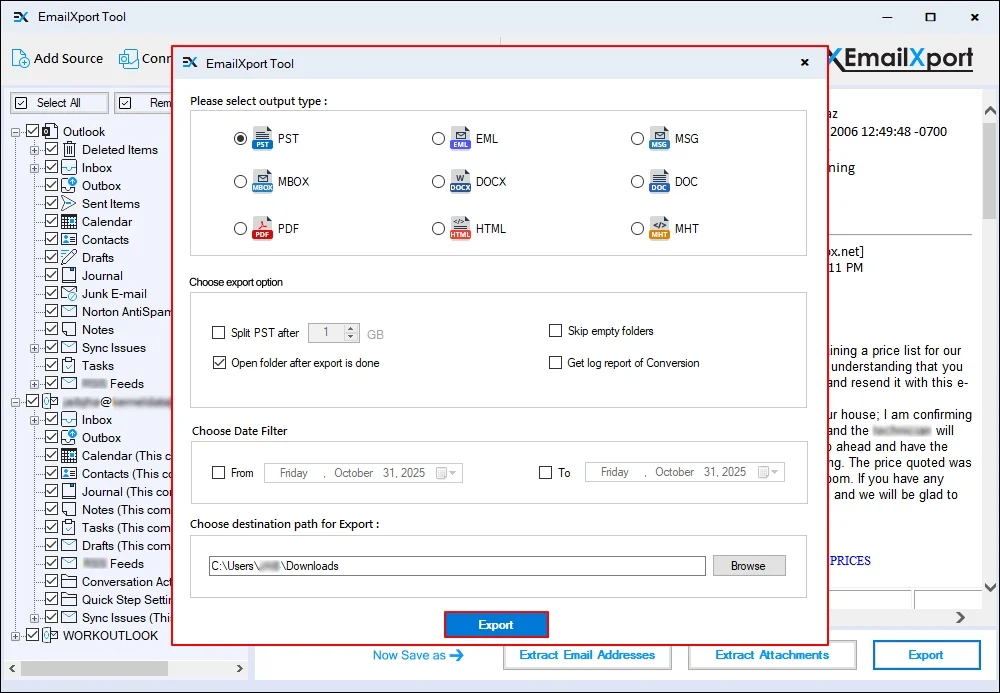
Step 11: The software will start the Exporting items and show a live status.
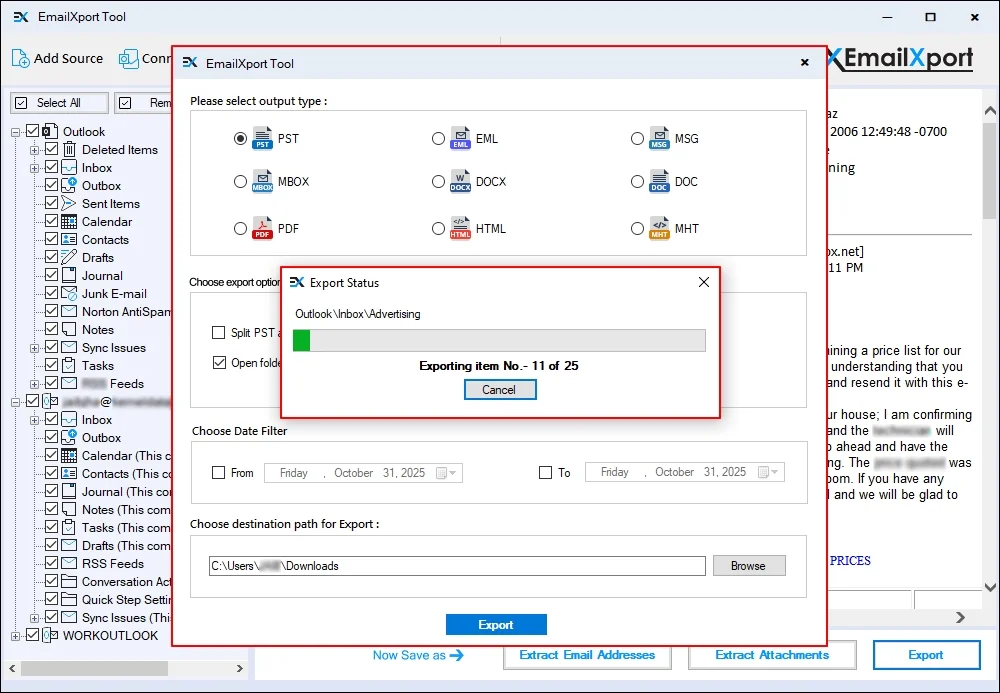
Step 12: After a successful export process, you will get an Export Completed message. Click Done.
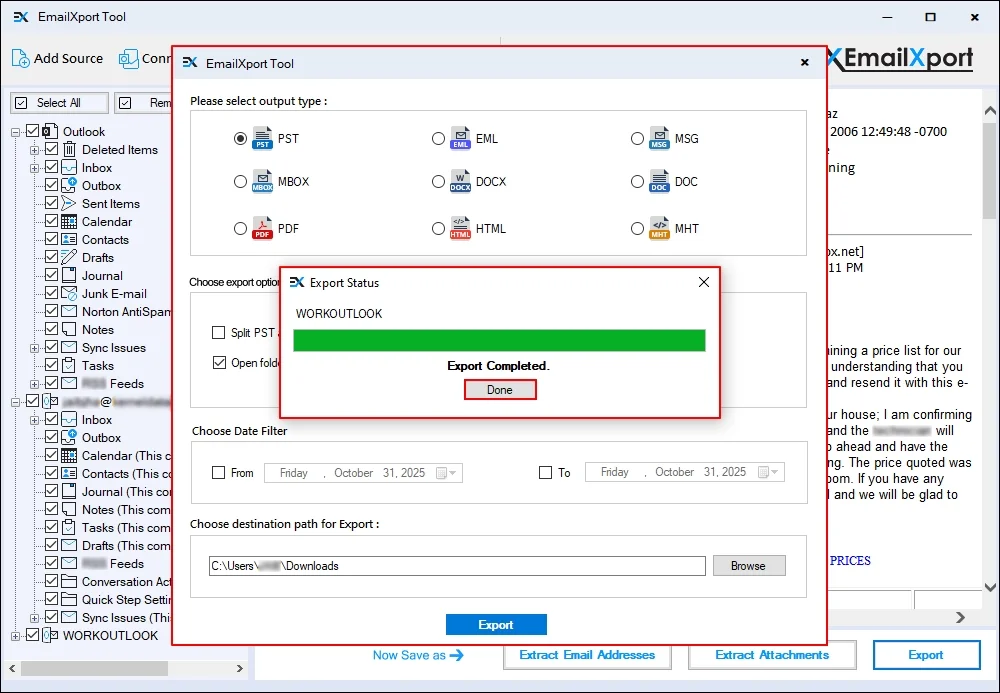
Step 13: The tool will automatically redirect you to the exported data on your computer.

